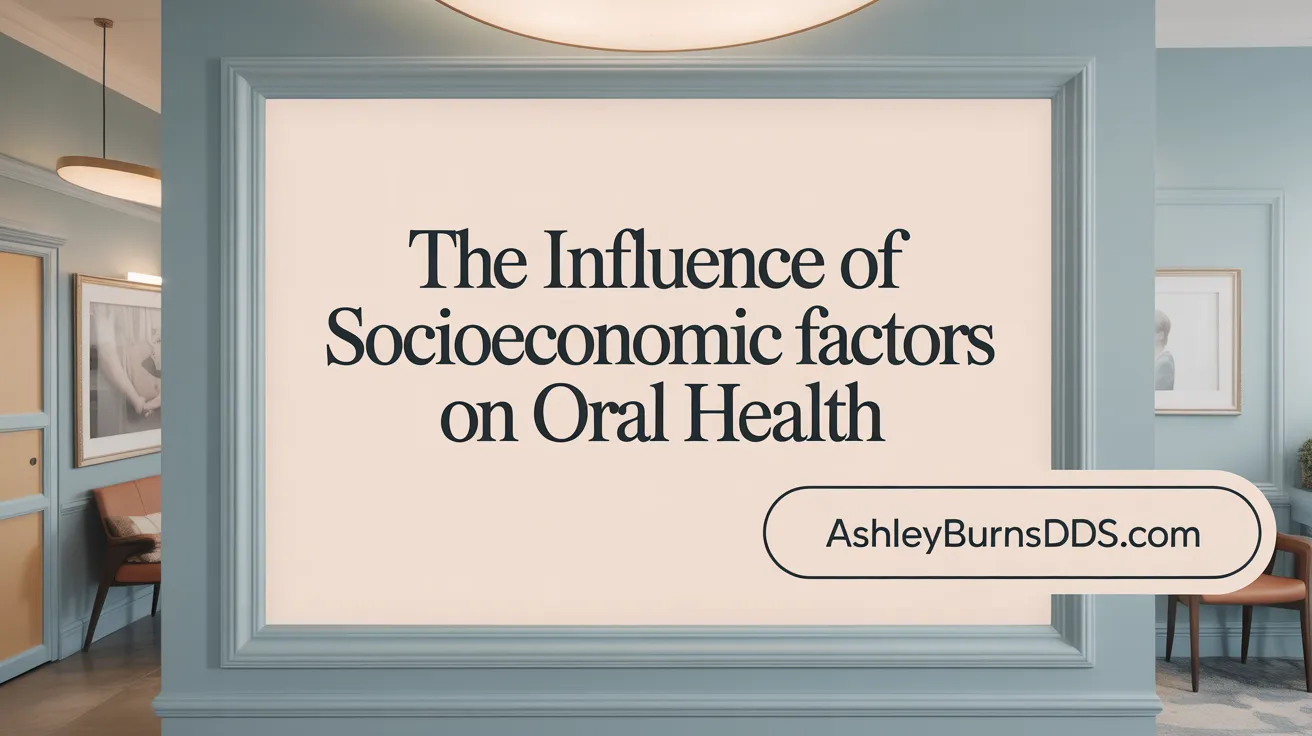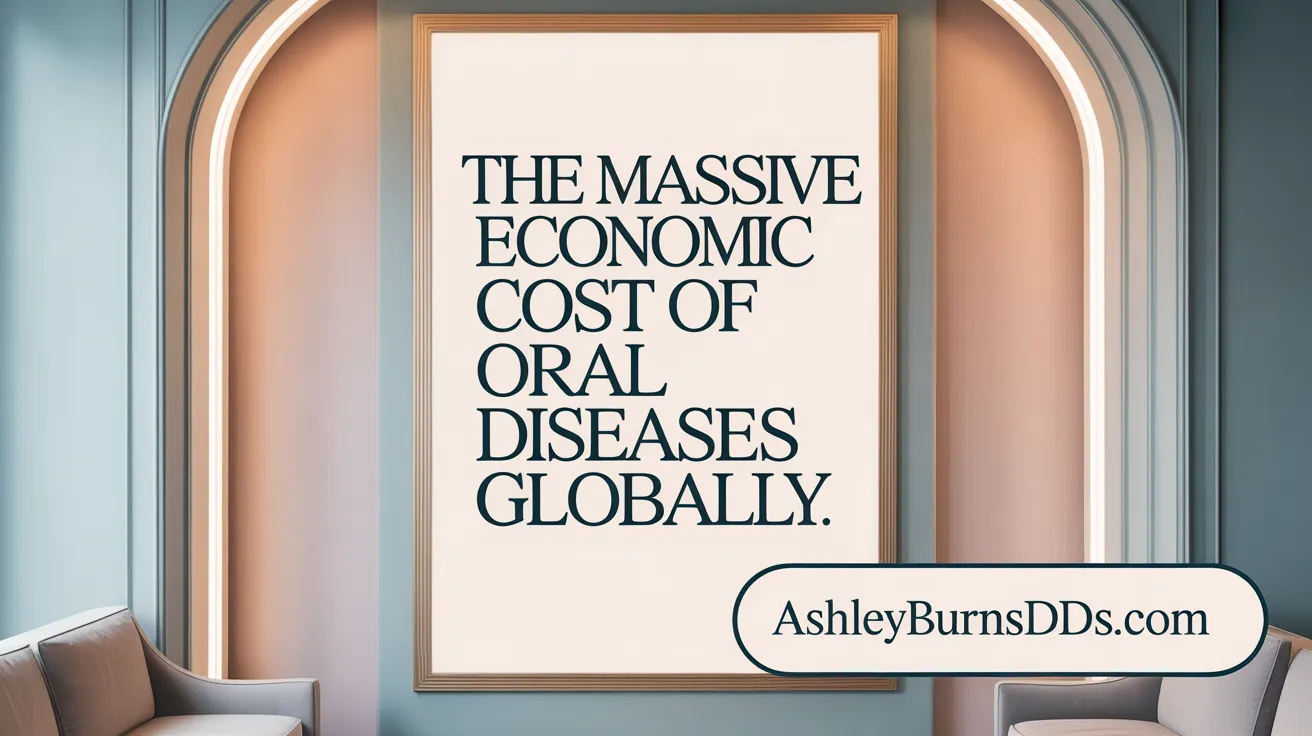Understanding the Global Scope of Oral Health Challenges
Oral diseases remain a significant yet often overlooked public health concern impacting billions worldwide. This article explores the prevalence, socioeconomic disparities, cultural practices, economic burdens, and future trends shaping global dental health. Leveraging data from the WHO and other authoritative sources, we shed light on how oral health varies across regions, the obstacles faced, and the initiatives striving to improve care equity and outcomes worldwide.
Global Prevalence, Disease Burden, and Trends in Oral Health

What are the prevalence rates, disease burden, and trends in oral diseases worldwide?
Oral diseases are one of the most widespread health issues affecting nearly 3.7 billion people worldwide. The most common condition is untreated dental caries, impacting about 2.3 billion people in permanent teeth. Severe periodontal disease affects over 1 billion individuals, contributing significantly to the global burden.
In addition, about 45% of the world’s population experiences some form of oral health issue during their life, including conditions like edentulism (complete tooth loss), oral cancers, and orofacial clefts.
The burden of these diseases is substantial, as measured by disability-adjusted life years (DALYs). For example, in 2017, oral disorders contributed over 18 million years lived with disability (YLDs), representing nearly 0.73% of all global YLDs. Conditions like severe periodontitis and edentulism have high DALY impacts, especially affecting older adults. More details on these global oral disease burden statistics are available.
Since 1990, there have been small reductions in some conditions such as untreated caries in deciduous teeth and severe periodontitis, but overall prevalence remains high. The global age-standardized prevalence rates for oral conditions show only gradual changes, with some regions experiencing increases.
Projections to 2040 suggest a modest decline in oral disease prevalence among youth, due to preventive measures and increased awareness. However, regional disparities persist, with African and Eastern Mediterranean regions seeing increased DALYs, while Europe and the Americas show improvements. These trends are reflected in recent WHO oral health strategies and data.
Regional disparities are stark; low-income regions bear a disproportionate disease burden, exacerbated by limited access to care, poor oral hygiene, high sugar consumption, and socioeconomic inequalities. Addressing these disparities remains crucial for future oral health improvements. Further analyses on oral health inequalities and disparities highlight these challenges and inform policy directions.
Socioeconomic Disparities and Their Impact on Oral Health

What is the impact of socioeconomic factors and health disparities on global oral health?
Socioeconomic determinants play a crucial role in shaping oral health outcomes across the world. People from lower-income backgrounds, with less education and marginalized social statuses, tend to suffer more from dental issues such as cavities, gum disease, and tooth loss. These disparities are largely driven by unequal access to oral health services, preventive care, and oral health education.
Individuals in disadvantaged communities often live in environments that hinder good oral hygiene, such as areas with limited water fluoridation, lack of affordable dental clinics, and poor nutritional options. For example, children from low-income households are more than twice as likely to have untreated cavities, which damages their health and development (oral health disparities).
Older adults and racial minorities are disproportionately affected by poor oral health, facing barriers like high out-of-pocket costs, insufficient insurance coverage, and limited availability of professional dental care, especially in rural regions. These groups also experience higher prevalence of severe periodontal disease, and complete tooth loss.
The broader social and economic inequities that contribute to these health disparities emphasize the importance of targeted strategies. Improving access to affordable preventive services, increasing health literacy, and implementing public health policies such as WHO oral health recommendations are essential steps toward reducing global oral health inequities and achieving health equity worldwide.
Cultural Practices and Variations in Oral Hygiene Around the World

Traditional oral care methods like Miswak and oil pulling
Across diverse cultures, traditional practices continue to influence oral hygiene routines. In many Middle Eastern and African countries, Miswak sticks derived from the Salvadora persica tree are widely used for their natural antibacterial properties. These twigs have been used for centuries as eco-friendly alternatives to modern toothbrushes, promoting oral cleanliness with minimal environmental impact.
In India, oil pulling with coconut or sesame oil is a longstanding Ayurvedic method believed to detoxify the mouth, whiten teeth, and improve overall oral health. This practice involves swishing oil in the mouth for about 15-20 minutes and is popular among those seeking natural health remedies.
Modern oral hygiene technologies and trends
In contrast, many Western societies embrace advanced dental technology. The use of electric toothbrushes and water flossers has gained popularity for their efficiency in plaque removal and gum health. Japanese culture emphasizes carrying portable toothbrushes and mini toothpaste tubes, reflecting a commitment to maintaining oral cleanliness after meals.
Cultural attitudes towards dental aesthetics and function
Attitudes toward dental appearance vary globally. North Americans often emphasize aesthetic factors like whitening and straightening, while Europeans tend to prioritize the health and functionality of teeth. In South Korea and Japan, there is a strong trend toward cosmetic dentistry, including teeth whitening, orthodontics, and veneers, driven by societal standards of beauty.
Dietary influences on oral health
Diet plays a vital role in oral health across cultures. Japanese diets rich in fish, seaweed, and green tea support oral health through their antioxidant properties. Conversely, high sugar consumption in North America is associated with increased dental caries and periodontal issues. For more on dietary influences and oral health risk factors, see WHO guidelines.
Regional public health oral care initiatives
Public health efforts vary worldwide. Canada, for example, focuses on school-based dental programs and public education campaigns to promote preventive care (Smile Around the World project). In many developing regions, traditional practices coexist with efforts to improve access to fluoride and professional dental services, aiming to reduce oral health disparities.
| Region | Traditional Practices | Modern Trends | Dietary Influences | Public Health Initiatives |
|---|---|---|---|---|
| Middle East & Africa | Miswak sticks, herbal remedies | Limited; some campaigns promoting hygiene | Use of dates, herbs for oral health | Community education, access to fluoride (WHO oral health policies) |
| South Asia | Oil pulling, herbal powders | Growing use of electric toothbrushes | Spicy, turmeric-rich diets | School programs, fluoride promotion (Smile Around the World |
| East Asia | Traditional herbal remedies, tea drinking | Cosmetic dentistry trends | Fish, green tea, rice-based diets | Policies promoting oral health awareness (WHO Global Oral Health Action Plan 2023-2030 |
| Europe & North America | Tooth brushing, dental floss, whitening | Advanced dental technology, Invisalign | Sugar-rich diets, processed foods | Public health campaigns, dental insurance coverage (Oral health coverage worldwide) |
This wide range of practices and attitudes highlights the importance of cultural context in promoting effective oral health strategies worldwide (WHO oral health strategies.
Economic Burden and Cost Implications of Oral Diseases Globally
 The worldwide economic impact of oral diseases is substantial, estimated at over $710 billion annually. This figure encompasses both direct treatment costs—approximately $387 billion—and productivity losses, which amount to roughly $323 billion each year. These costs reflect the extensive burden on healthcare systems and individual economic productivity.
The worldwide economic impact of oral diseases is substantial, estimated at over $710 billion annually. This figure encompasses both direct treatment costs—approximately $387 billion—and productivity losses, which amount to roughly $323 billion each year. These costs reflect the extensive burden on healthcare systems and individual economic productivity.
Disparities in spending are stark across different nations. High-income countries typically allocate about $260 per person for dental care, whereas low-income countries spend an average of just $0.52 per capita. Such a wide gap underscores significant inequalities in access to care and preventive services.
Oral health conditions also influence broader societal productivity. Untreated dental issues lead to pain, infections, and complications that result in missed work and school days worldwide. For example, over 164 million hours of work and 51 million hours of school are lost each year in the United States alone due to dental problems (source).
Preventive strategies like water fluoridation and dental sealants are highly cost-effective and play crucial roles in reducing both treatment costs and productivity losses. Water fluoridation has been proven to reduce cavities by 25%, and sealants can prevent up to 80% of tooth decay in children (CDC oral health facts.
Investing in preventive measures and ensuring equitable access to oral health services can significantly decrease the economic burdens associated with oral diseases. By prioritizing early intervention and widespread preventive programs, countries can alleviate the financial and societal impact of these common but preventable health conditions (WHO oral health strategies.
Advancing Oral Health: Global Initiatives and Future Outlook

What public health initiatives, policies, and programs are aimed at improving oral care worldwide?
Global efforts to improve oral health focus on preventive strategies and expanding access to care, especially in underserved populations. Central to these initiatives is the WHO’s Global Strategy and Action Plan on Oral Health 2023–2030, which promotes integrating oral health into universal health coverage and primary healthcare systems.
Countries worldwide are adopting measures such as water fluoridation programs, school-based dental sealant initiatives, and community outreach campaigns to raise awareness about oral hygiene. Innovative approaches like tele-dentistry are also being leveraged to reach remote areas.
International collaboration supports monitoring and resource allocation, aiming to reduce disparities and strengthen health systems. Additionally, consumer preferences are shifting towards eco-friendly, natural products, and technological innovations such as AI-driven toothbrushes and digital dental diagnostics are transforming care delivery. More on oral health strategies and policies.
What are the projected future trends and outlook for the global dental industry and oral health advancements?
The future of the dental industry is poised for significant growth driven by demographic shifts, economic development, and technological progress. The sector is expected to expand at a compound annual growth rate (CAGR) of around 5.1% between 2025 and 2035.
Emerging technologies like 3D printing, digital imaging, and teledentistry will revolutionize diagnostics, treatment planning, and patient engagement, making dental care more precise and accessible.
There is also an increasing emphasis on preventive and holistic approaches, aiming to lower long-term healthcare costs. Cosmetic dentistry, influenced by social media trends, will continue to fuel consumer demand for whitening, alignments, and other aesthetic procedures.
With rising disposable incomes in developing countries, markets for natural, smart, and eco-friendly oral health products will grow, expanding availability through supermarkets, online platforms, and pharmacies. Overall, innovations coupled with policy support will drive a more inclusive, high-tech, and patient-centered future for global oral health. For detailed economic impacts and oral health trends and global oral health initiatives.
Bridging the Global Divide in Oral Health
Oral diseases pose a universal challenge, impacting billions and exerting significant economic and social costs. While some regions benefit from robust preventive programs and equitable access to care, many vulnerable populations continue to face substantial barriers rooted in socioeconomic inequalities and cultural factors. Progress depends on concerted public health efforts, integrating oral health into broader healthcare frameworks, expanding access through innovative technologies, and tailoring culturally competent interventions. Recognizing oral health as integral to overall well-being and prioritizing global collaboration will be essential to narrow disparities and ensure a healthier smile for all by 2030 and beyond.
